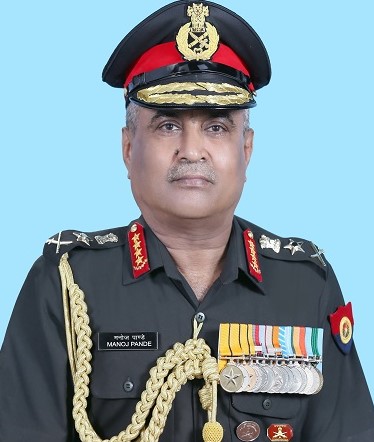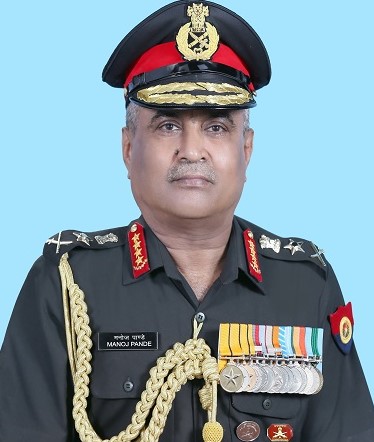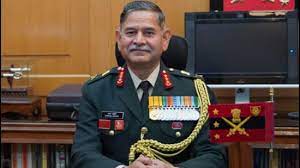Evolution of technology has impacted warfare but technological advantage may just be reduced to a tactical level when it is taken away from the larger strategic context and regarded as the “sole driver” of success in a war, Indian Army Chief General Manoj Pande said.
In his address at a seminar here, he also said technologies are emerging in new unchartered domains, and “revolutionising and establishing a ‘new normal’ in different fields”.
Gen Pande further said technology has also emerged as the “new strategic arena of competition, driving geo-political powerplays and is being leveraged for weaponisation of many domains, ranging from information to supply chains”.
The Army chief was addressing a gathering during a seminar on “Year of Technology Absorption: Empowering the Soldier” organised by a defence think-tank at Manekshaw Centre at Delhi Cantonment.
Technology from a warfighting perspective, has undergone significant evolution over the centuries, and has “impacted warfare in a profound manner,” he said.
Gen Pande cited the examples of rifles, railroads, telegraphs and ironclad ships in the 19th-century wars; the machine gun, tank, aeroplane, aircraft carriers and atomic weapons in the 20th-century wars; to the niche technologies that have today permeated into the military domain.
They “all highlight examples of how technologies change the face of wars and influence their outcomes”, he said.
History shows that armies that have managed to adopt and integrate new technologies have gained advantage on the battlefield and achieved success, he underlined.
Infusion of technologies such as computers, radars, code-breaking and aircraft production by the Allies in World War II was instrumental in securing victory for them, while in the early years of the War, it was Germany and Japan which leveraged their industrial and technological capacities to “accrue advantages of scale’, over the Allies, the Army chief added.
“On the other hand, technological advantage may just be reduced to a tactical level, when it is taken away from the larger strategic context and regarded as the sole driver of success in war. Vietnam and Afghanistan are examples of the same,” he asserted.
“Therefore, understanding of new technologies, harnessing their potential and accruing strategic superiority — is the essence of leveraging technology from a warfighting perspective,” the Army chief said.
The Indian Army is observing 2024 as the ‘Year of Technology Absorption’.
The Army chief dwelled on the ethos of ‘atmanirbharta’ that the force is seeking to augment and further achieve in line with the government’s vision of self-reliance in defence.
“Technologies continue to evolve. These are emerging in new unchartered domains, are revolutionising and establishing a ‘new normal’ in different fields, are interconnected to one another in different disciplines and are commercially available,” he said.
The military-technological landscape today is witness to a “manifold increase in the lethality and accuracy of kinetic instruments and increased proliferation of technologies” such as artificial intelligence, quantum computing, robotics, 3D printing and nanotechnology, the Army chief said.
He reiterated that emerging technologies are no longer superpower-centric and even non-state actors are gaining access to modern technology, for military use and employing it for “asymmetric leverage in conflict”.
He cited how recent conflicts have brought to the fore significant insights on how disruptive and dual-use technologies and their proliferation at unprecedented scale — are transforming the character of modern wars.
A suite of digital technologies — encompassing electronic warfare, micro-electronics, drones, precision attack systems, loiter munitions and star link terminals — are “challenging traditional force multipliers,” he added.
“Swarming is contesting surging, surveillance and precision are scoring over fire and manoeuvre, and the light and small are prevailing over the large and heavy.
Conventional force ratios which were the measure of military strength and superiority, in the past, today stand blunted,” Gen Pande added.
The battlefield effect rendered by disruptive technology-driven systems mandates new predictive models to assess combat potential superiority, he asserted.
Warfare has transcended into new domains, such as space, cyber, electromagnetic spectrum and information.
The scope of grey zone warfare too, has “enhanced” due to technological advancements.
Consequent to these developments, the battle space has become “more complex, contested and lethal, and shall remain so in the future,” the Army chief said.
The impact of external dependency on critical components, supply chain disruptions and “weaponisation of denial regimes” came to the fore, during the pandemic and also from the lessons of the ongoing Russia-Ukraine conflict, he said.
“We need to recognise that, even if we were to import some warfighting systems, no country will share the latest, advanced and critical technology.
Being import-dependent for critical technologies hence entails the risk of remaining one technological cycle behind, in niche areas,” the Army chief said.
Therefore, the need to be self-reliant in warfighting platforms and systems and achieving self-sufficiency in critical technologies through indigenous research and development, is an “imperative”, he added.
Doctrinal adaptation, consequent to technology adoption, is an imperative.
We need to tailor our doctrines and strategies to the prevalent operational paradigm. Refining operational philosophies, concepts of employment and tactics, commensurate to the combat effects that accrue from new technologies, is important — to maximise the battlefield potential of modern weapon systems,” he said.
This shall remain an ongoing process, he added.





